Vietnam’s international dissemination: From revolutionary leaflets to a global media presence
From revolutionary manifestos to digital diplomacy, Vietnam’s foreign journalism has evolved into a powerful instrument of soft power helping advance national interests and affirm the country’s voice on the world stage.
THE HANOI TIMES — In the Summer of 1925, a young Vietnamese man in Paris, then known as Nguyen Ai Quoc, slid an article under the door of L'Humanité, the newspaper of the French Communist Party. The piece, laced with moral clarity and political urgency, denounced colonial brutality in Indochina. This was the man the world would come to know as Ho Chi Minh.
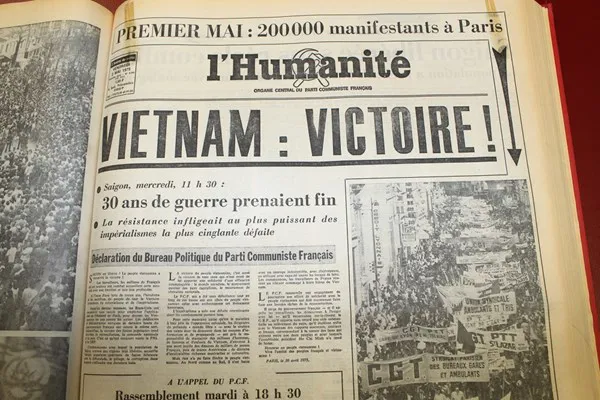
The headline of the May 2, 1975 issue of L'Humanité reads: "Vietnam - Victory". Photo: Archive
His work, published in a language unknown to his people, in a capital city far from his homeland, marked one of the first conscious acts of Vietnamese communication abroad. They were the beginning of a centuries-long story of how Vietnam has used the media to assert its identity, shape global perceptions, and advance its national development agenda.
Today, as Vietnam emerges as a strategic hub in global supply chains and a rising regional power, the country's international dissemination has evolved into a sophisticated public relations apparatus. From the terse revolutionary bulletins of the 1940s to today's multilingual digital platforms, Vietnam's external news service has matured alongside the nation itself, serving as a diplomatic tool, a cultural bridge, and a strategic instrument of soft power projection.
Revolution to reform
Vietnam's foreign information press has its roots in the revolutionary period of the early 20th century. The Thanh Nien newspaper, founded by Ho Chi Minh in 1925, played a pivotal role in disseminating revolutionary ideals in China. While its initial audience was domestic, it also sought international solidarity by translating and exporting its message beyond Vietnam's borders.
“International dissemination in its earliest form was not merely propaganda, it was a weapon, a sharp-edged instrument of diplomacy,” said Professor Nguyen Van Dung, former Head of Journalism at the University of Social Sciences and Humanities.
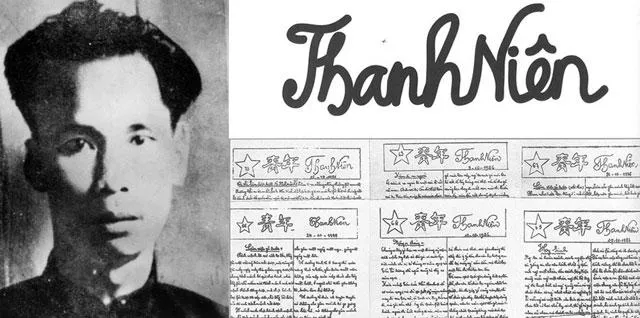
Nguyen Ai Quoc (later known as Ho Chi Minh), founder of Thanh Nien, Vietnam's first revolutionary press. Photo: Archive
Between 1925 and 1945, Vietnamese revolutionaries published hundreds of articles in French, English, and Russian, many carried in left-leaning European outlets. These publications were instrumental in rallying support among intellectuals and anti-colonial movements from Asia to Africa.
"Thanks to journalism, the world came to know a resilient Vietnam hungry for freedom," wrote the late historian Tran Van Giau, highlighting the media's key role in legitimizing Vietnam's independence movement on the world stage.
Following the August Revolution of 1945, the role of the revolutionary press in international dissemination intensified. Publications such as Cuu Quoc (National Salvation) and Su That (The Truth) provided not only news but also ideological guidance to the global audience.
Vietnamese media shifted from revolutionary fervor to the defense of independence. The launch of the Voice of Vietnam (VOV) in 1945 marked a milestone. Initially broadcasting in only a few foreign languages, it soon became an essential diplomatic channel during the two Indochina wars. By the 1970s, VOV was broadcasting in English, French, and Russian, reaching millions in more than 50 countries.
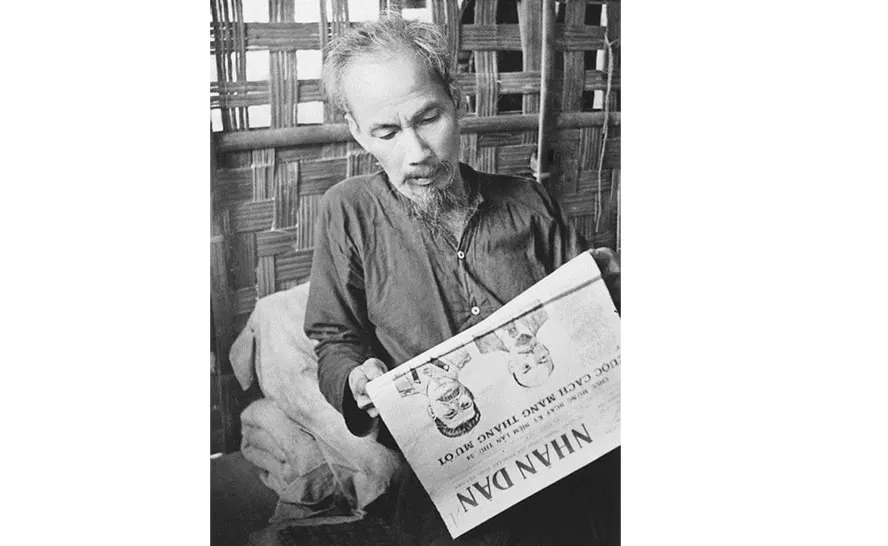
This iconic image shows Ho Chi Minh reading the Nhan Dan (People) newspaper, symbolizing the central role of the media in Vietnam's revolutionary movement. Photo: Archive
"The role of the press in international dissemination during this period was not only informational. It was Vietnam's soft power in action, breaking the siege of isolation," said Dr. Pham Lan Dung, a specialist in media and international relations.
Vietnamese reporters worked alongside international journalists. Between 1965 and 1975, more than 2,000 foreign correspondents were assigned to Vietnam. Many relied on Vietnamese media for access and context. This exchange fostered solidarity with Vietnam movements abroad, especially in the US and Western Europe, where anti-war sentiment was fueled in part by Vietnamese media framing and outreach.
With Doi Moi (Renewal) in 1986, Vietnam's landmark economic reform program, the role of the press in foreign communication took a new turn. The foreign services of outlets such as the Vietnam News Agency (VNA), Nhan Dan, and VOV began to increase their professionalism, expand their language offerings, and tighten their editorial standards.
In 1991, Vietnam News debuted, providing English-language coverage of current events. Its mission was to communicate Vietnam's development agenda, investment potential, and policy priorities to the outside world. "International communication for the press in the Doi Moi era was more than reporting; it shaped Vietnam's global image as a dynamic, reform-minded economy," said Associate Professor Nguyen Thi Minh Thai, an expert in cultural and media studies.
By 2000, VNA had formal partnerships with more than 40 international news agencies and published in five major languages. International coverage of Vietnam's natural heritage sites, such as Ha Long Bay or Phong Nha-Ke Bang, helped spark a tourism boom. According to the Vietnam National Authority of Tourism, foreign tourist arrivals grew from 1.7 million in 1995 to 18 million in 2019.
Into the digital age
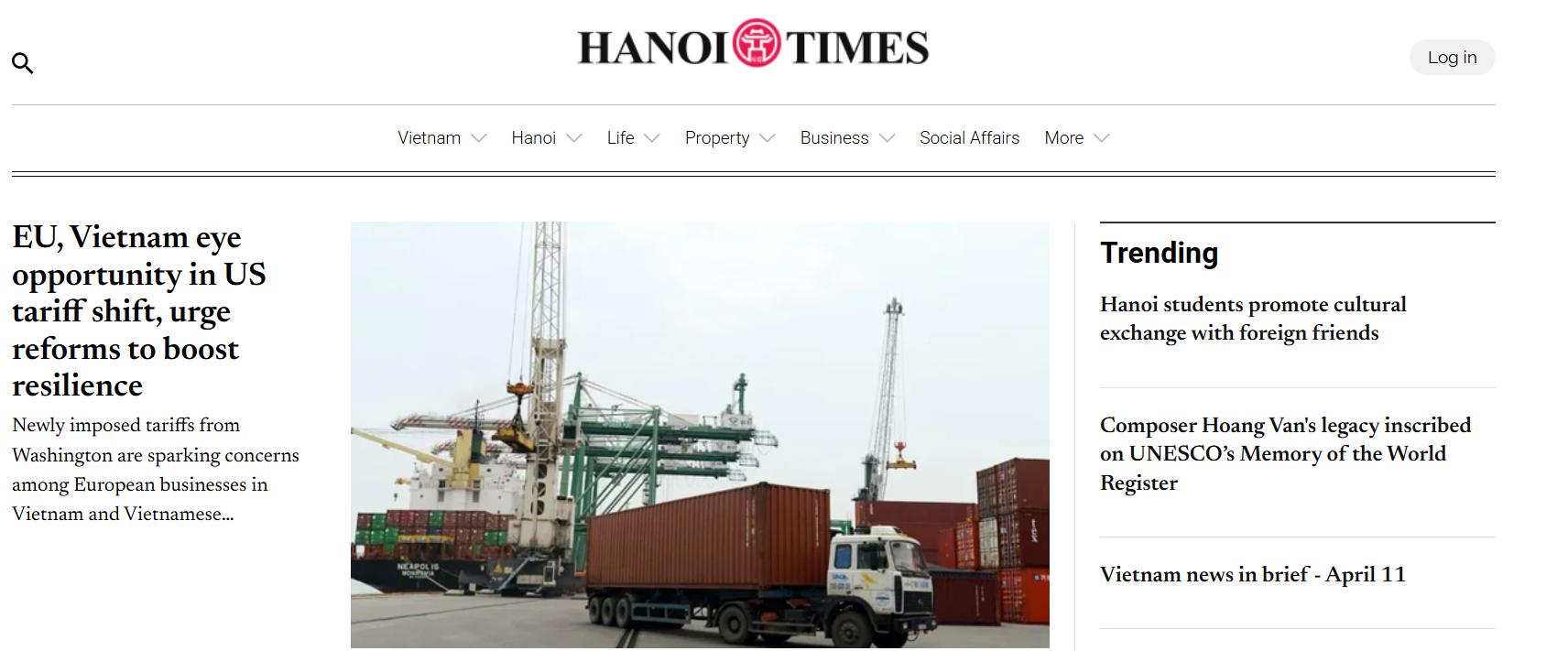
The interface of The Hanoi Times has recently been upgraded to be more appealing to both local and international readers.
The digital revolution ushered in another turning point. Vietnamese foreign journalism embraced online platforms and social media to reach a younger, globalized audience.
Outlets such as VietnamPlus, The World & Vietnam Report or The Hanoi Times launched digital editions, offering multilingual content on platforms optimized for mobile and social sharing. According to the Ministry of Information and Communications, international coverage of Vietnam in 2023 exceeded 50,000 articles, up 30% from the previous decade, driven by proactive digital engagement.
But digitalization also carried new risks. "Today's international dissemination must be both fast and accurate, a double imperative to protect Vietnam's image amid a flood of misinformation," warned Dr. Tran Ba Dung, former Director of the Professional Affairs Department at the Vietnam Journalists Association.
In the midst of these structural changes, foreign communication has been diversified with new actors. Personal stories continue to shape Vietnam's global projection, such as that of Nguyen Le Chi, a Vietnamese translator and founder of Chibooks. Her commitment to accurate translation has helped make Vietnamese literature accessible worldwide. She founded the Translated Literature Council under the Ho Chi Minh City Writers' Association, which focuses on ensuring that Vietnamese works are faithfully rendered in multiple languages.
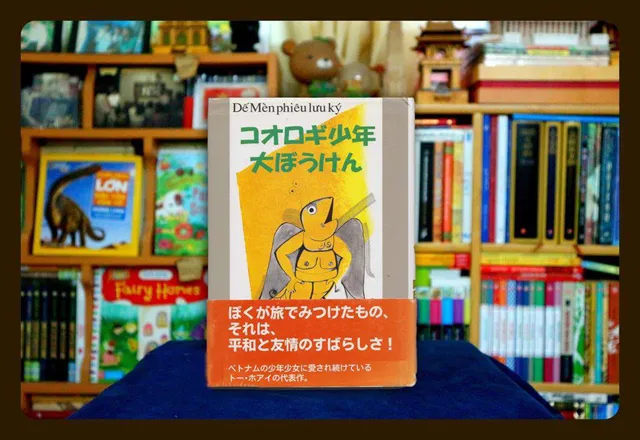
A Japanese version of Diary of a Cricket, translated by Maki Okada and illustrated by Thanh Chuong. Photo courtesy: Kim Dong Publishing
Nguyen Le Chi once said in an interview, "The power of literature lies not only in the original language, but in its ability to transcend borders and speak to people across cultures. Translation is a bridge that connects the heart and mind of Vietnam to the world."
Her work is a testament to the complex efforts behind cultural exchange and illustrates the passion of individuals in shaping Vietnam's international reputation. Her translation of Diary of a Cricket by To Hoai has reached readers in 37 languages, allowing international audiences to engage with Vietnam's rich literary heritage. Chi's story has been covered by Vietnamese foreign language media, reflecting how individuals contribute to the broader narrative of Vietnam's emergence on the global stage.
From its early revolutionary roots to its current digital prowess, Vietnam's foreign communications have played a fundamental role in shaping the nation's image and fostering global connections. Whether as a tool to promote national sovereignty or as a means to showcase the country's vibrant culture, journalism remains a key force in Vietnam's foreign communication.
As it continues to professionalize and adapt to the digital world, journalism is poised to play an even more important role in Vietnam's international dissemination and future. As veteran journalist Nguyen Khac Tiep aptly said, "It is the voice of the nation, the guiding flag that will lead Vietnam out into the wide world."











